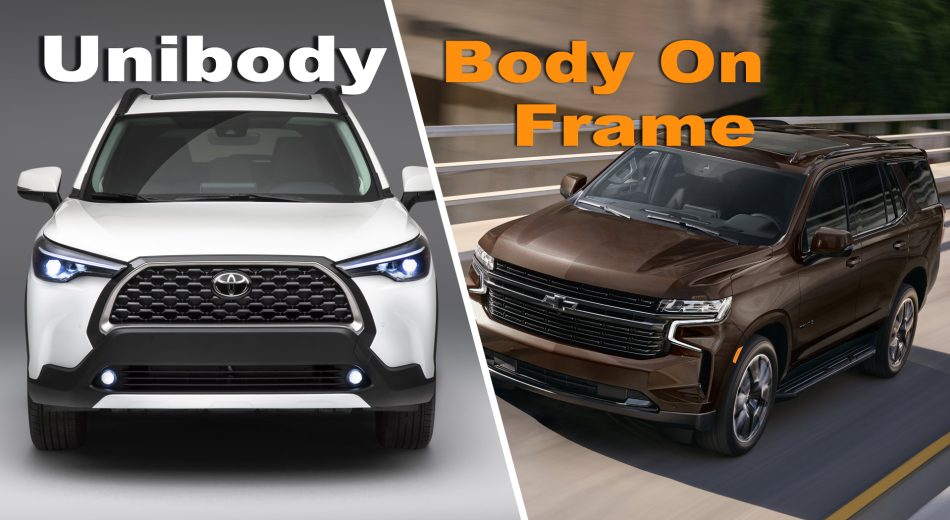When it comes to choosing a new or used sports utility vehicle, understanding the difference between unibody and body-on-frame constructions can significantly impact your driving experience. SUVs are designed around two primary frame structures – each has its benefits and drawbacks.
Let’s break down these two types of SUV platforms and explore which one offers more comfort for you the driver.
Unibody platform SUVs

A unibody SUV is a vehicle where the body and frame are a single structure. This construction approach provides various benefits that contribute to driver comfort.
1. Enhanced Handling and Stability
Unibody vehicles typically handle better due to their lower center of gravity, which aids in improved stability and cornering. This can be particularly noticeable in compact SUVs and mid-size SUVs, where balance and maneuverability are key.
2. Improved Fuel Efficiency
Unibody SUVs generally weigh less than body-on-frame SUVs, leading to better fuel efficiency. Whether you’re looking at long-range electric SUVs or fuel-efficient gas-only SUVs, unibody construction often contributes to better MPG ratings.
3. Superior Ride Quality
With the frame and body integrated, unibody SUVs usually deliver a smoother, more car-like ride. This translates into reduced road noise and vibrations, providing a more enjoyable, comfortable driving experience.
Body-on-Frame SUVs
Body-on-frame SUVs, on the other hand, have a separate body mounted on a rigid frame, much like the construction of trucks. This design also has unique benefits that could enhance driver comfort in certain situations.
1. Off-Road Capability
If your driving often takes you off the beaten path, body-on-frame SUVs are generally more robust and better suited for off-road conditions. They have a ruggedness that comes from their truck-like construction, making them among the best off-road capable SUVs on the market.
2. Towing Capacity
Body-on-frame SUVs are typically capable of towing heavier loads than unibody SUVs. So, if you need an SUV with high towing capacity, a body-on-frame vehicle, like those found in this list of SUVs with the highest towing capacity, might be the better option for you.
3. Durability
The separate body and frame construction means these SUVs can withstand more punishment without incurring significant damage. This can be a comfort factor if you often drive in harsh conditions or rough terrains.
So, Which Platform will be More Comfortable for you?
Ultimately, the more comfortable platform between unibody and body-on-frame SUVs will depend on your driving habits and needs.
For city driving, daily commutes, and regular highway travel, unibody SUVs usually offer more comfort with their superior ride quality, enhanced stability, and improved fuel efficiency. Vehicles like the Honda HR-V are excellent examples of this design.
However, if you frequently venture off-road, tow heavy loads, or drive in harsh conditions, the ruggedness and durability of body-on-frame SUVs, like those in the list of most popular large SUVs, may provide greater comfort and peace of mind.
In essence, both unibody and body-on-frame SUVs have their unique advantages. It’s essential to consider your specific driving needs, preferences, and the environment you’ll be driving in when deciding which platform will offer the most comfort for you as a driver.
Wrapping Up
Whether you choose a unibody or body-on-frame SUV, remember that driver comfort involves several factors such as seat quality, noise insulation, suspension tuning, and available features like adaptive cruise control.
In any case, a well-informed decision will ensure that you pick the SUV platform that aligns best with your lifestyle and driving habits. Happy motoring!
Do you have a question or need more advice on choosing between a unibody or body-on-frame SUV? Feel free to use our contact section to reach us. We’re here to help!
Please note that while we aim to provide accurate and up-to-date information, it’s always recommended to do your own research or consult with a professional before making a final decision.



